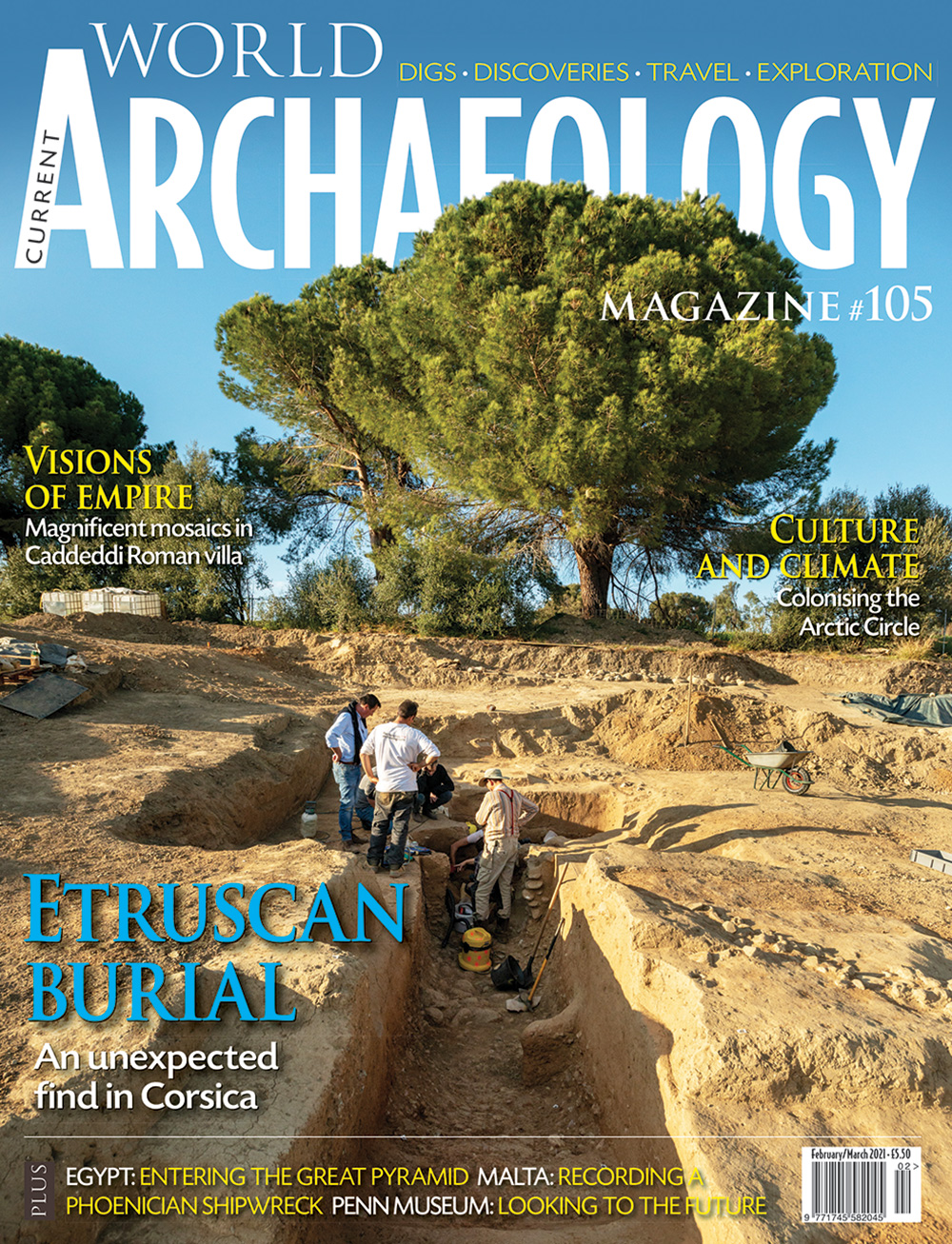Excavations on Corsica sprang a surprise when archaeologists discovered a set of steps descending into the ground. Work at the site, undertaken in advance of a building development, had already revealed a Roman-era cemetery. The steps, though, led to a much rarer discovery: an intact Etruscan tomb. Within, the deceased lay beside grave goods that reflected her social status and seemingly hold the key to unlocking secrets of Etruscan burial rites.
Status was also being flaunted at the Roman villa of Caddeddi, on Sicily. Today, this impressive 4th-century AD residence is little known, but portions of fine mosaics lay preserved inside. These feature scenes ranging from mythology to hunting, while clues in the compositions suggest the owner may have shunned local workshops in favour of mosaicists from North Africa.
Long-distance movements are important, too, for understanding life in the Arctic. Humans have been living in the region for at least 30,000 years, and the passing millennia have frequently forced its inhabitants to adapt to a capricious climate or to make way for incomers bearing advanced technology. Developing ways to travel over long distances allowed Arctic peoples to tap into distant trade routes, including the Silk Road.
Trade also explains the presence of a wreck off the island of Gozo, in the Mediterranean. The vessel was a Phoenician ship that foundered in the 7th century BC. Archaeological exploration of the site is producing fascinating insights into its cargo, while a new digital museum is making a virtual-reality version of the wreck accessible to all.
Elsewhere in this issue, Richard Hodges casts an eye over how we present the past when he explores the galleries and story of Penn Museum. Finally, we consider the Great Pyramid at Giza and what the monument suggests about the relationship between a pharaonic father and son.

